CORTH Blog: March 2018
Thais Valim
Thais Valim is an anthropologist based at the University of Brasília.
CNPq scholar – Brazil
Email Thais.
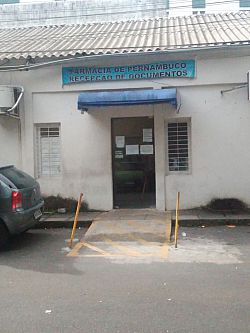 Municipality Pharmacy (Soraya Fleischer)
Municipality Pharmacy (Soraya Fleischer)
As the first babies diagnosed with microcephaly developed, other clinical signs began to be observed — such as motor difficulties, some alterations in eyesight and cardiac disturbances. In this scenario, specialists began to understand this phenomenon as a syndrome, a group of symptoms that became known as SCZV — Congenital Syndrome of Zika Virus.
To better understand, analyze and classify the biomedical vicissitudes of the emerging epidemic, one of the strategies instituted by the Health Ministry was an organised effort to examine new born babies diagnosed with SCZV. Several children were subjected to tests, exams and other clinical procedures. As one of the mothers interviewed as part of our research project affirmed, ‘the doctors are still in the process of defining the syndrome.’ The bodies of those children were effectively being used as objects of study for this empirical characterization of new scientific discoveries.
Medical personnel justified such procedures in terms of a need to better understand the epidemic and to offer therapeutic options for affected babies. However, the mothers reported experiences of objectification or of de-subjectification of their children. Medical practice that should help the health of these children, in reality, captures them for investigation and transforms them into objects of study. This is the case of Luiza, who even before she was 30 days old already had been submitted to a long battery of clinical examinations. Her mother, Jacqueline, reflected on these tests and said:
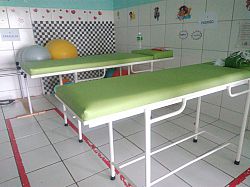 Rehab Clinic (Soraya Fleischer)
Rehab Clinic (Soraya Fleischer)
They came, entered our room and ordered the removal of her clothes so she could be examined. They examined her all naked. Later, others came and looked at her again. I was there in the hospital for 13 days […] And then, finally, I was very tired, crazy to go home, to my own place. Then, in came a resident doctor, and I asked him, “Are you a resident?”. If he in fact was, I would say, “No, no, no. Only real doctors can touch her now. And that’s it. No more examination.”
The impression that they were capitalizing information by using the body of her daughter was intensified by Jaqueline’s attentive observation of other children and their mothers that she came to know. She continued:
I saw a child with microcephaly that had died. She died right there in front of us all. The staff quickly wrapped the child up in a white cloth, well wrapped up. Then they obliged the mother to sign a form and they took the child’s body away for research. The mother did not even have the chance to mourn and bury her own child, or anything like that.
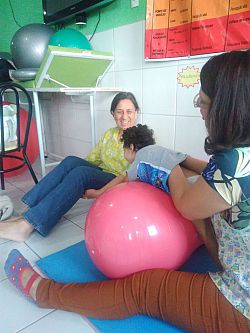 Maya visiting rehab clinic (Soraya Fleischer)
Maya visiting rehab clinic (Soraya Fleischer)
Many mothers and families reported similar occurrences and treatment. In spite of the abuses identified, the majority of families continued with the clinical examinations because they believed that this was being done in order to increase the chances of survival and their child’s quality of life. An important part of the parent’s decision was the fact that some therapies of early stimulation (such as physiotherapy, occupational therapy, audiotherapy) were highly prized, and were offered in exchange for the participation of these children in the research and clinical tests.
These exams were necessary: the syndrome is new and even today there is much more to be discovered. In theory, the urgency to better understand the syndrome was the driving force of the idea that the new discoveries would eventually improve the lives of these children. Research should produce results and outcomings in the name of the wellbeing of these children and their families. Yet another layer of clinical malpractice was revealed: after all the procedures, some of which quite uncomfortable and invasive for the children, many mothers reported that they never received any of the results from these exams. Jaqueline herself told our research team that she only came to know the result of the blood test that had determined the connection between Zika virus and her daughter’s microcephaly condition six months after the blood had been collected. Even then, the doctors never gave her the results printed in paper, and formally authenticated and signed. They simply communicated the results orally to her, “mouth results,” as she called it. Without written evidence, numbers, signatures and official stamps, the route to access the health and bureaucratic services would become even more difficult for these women and their babies.
If so much effort was dedicated in the direction of better characterization of an epidemic and a virus to improve the treatment of these children, why were the results not widely shared and disseminated with these families? Where have these new discoveries gone beyond the publication in international science journals? For whom, then, is science being made to benefit?
|
|
|
This blog post originally featured as part of a series of ethnographic ‘micro-stories’ (Microhistórias), and has kindly been translated for CORTH from Portuguese to English by David Fleischer.
Soraya Fleischer (Anthropology Department, University of Brasília) explains how Microhistórias has several goals:
Firstly it aims to keep alive the discussion about the Zika virus epidemic and its immediate consequences for directly affected children, women, families and communities. Keeping the discussion alive is an important political choice for us at the moment, especially when so many other actors, such as the media, governments, health services, for example, have steadily withdrawn from the scene. The stories are based on empirical and ethnographic data, produced during field incursions in the great metropolitan region of Recife, where the epidemic was so relentless. Our research team consists of academics and students, who visit Recife every semester to meet, visit, and live with women whose children were born with the Congenital Syndrome of the Zika Virus. They are telling us, first hand and in the first person, what it is like to be at the epicenter of all this intense phenomenon. It is from their stories, always veiled to avoid exposure and embarrassment, that these texts are born. It is ethnographic data that inspires our writings here. The blog, therefore, presents results of this research in progress.
The blog also has pedagogical intentions, since it involves students and anthropologists in (constant) state of learning. Writing shorter pieces is a way of provoking the more conventional academic writing, which generally prefers longer, verbal, prolix formats. The idea here is to exercise other ways of telling stories, with dialogues, memories, etnofiction, etc. However, while the texts are succinct, we do not want to lose density and emotion. All this stimulates reflection and creativity, contributing to more versatile and communicative anthropology. So blogging is a way of knowing stories, of producing knowledge, of building an academic environment. Microhistórias is a way of being in direct contact with an epidemic, with those who lives it in daily life, and those who wants to know more. It is a blog that amplifies and enhances women, anthropologists, an Anthropology department, and a public university in Brazil. Welcome. Come in. Let's recall and tell stories and let them inspire us.
Funders: CNPq, FINATEC and Anthropology Department (Brazil).



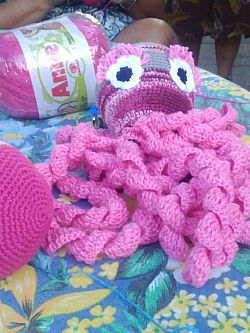 Little octupus made for babies (Soraya Fleischer)
Little octupus made for babies (Soraya Fleischer)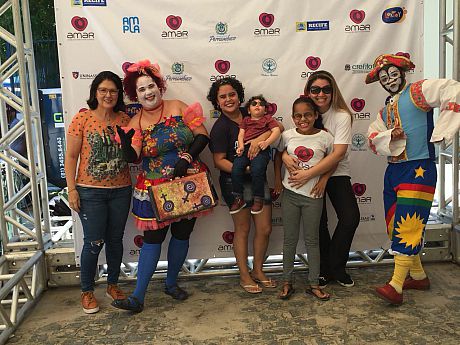 Carnival at AMAR (AMAR Facebook picture)
Carnival at AMAR (AMAR Facebook picture)